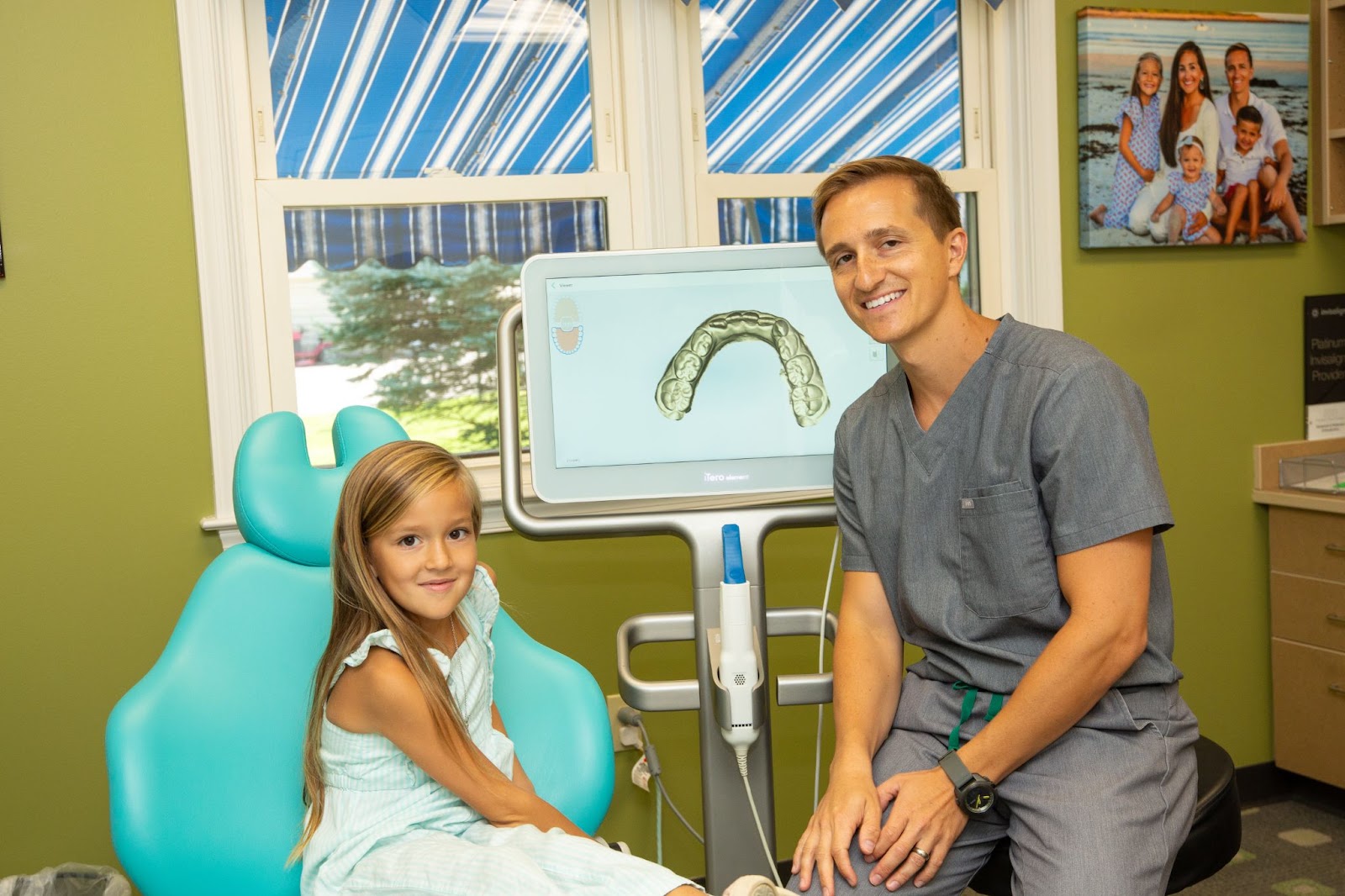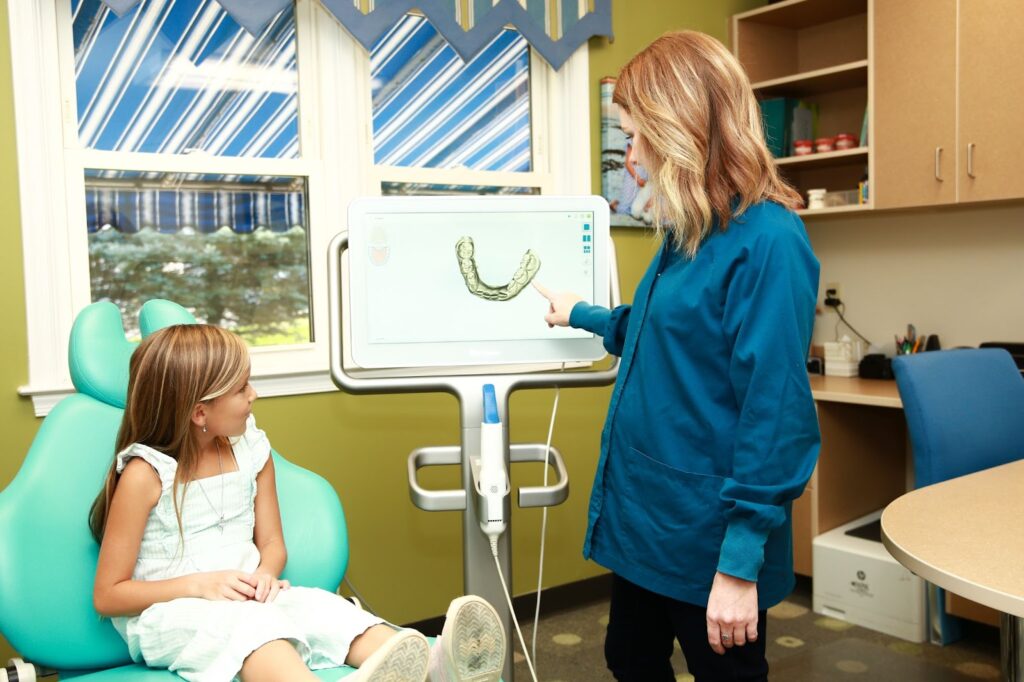Our team at Andrew Pedersen Orthodontics is here to help you explore two-phase treatment, a specialized orthodontic approach designed to address early signs of dental issues in children. So, without further ado, let’s dive into the details of this proactive treatment method and break down the benefits of two-phase treatment.
Two-phase Treatment 101
Two-phase treatment is a specialized orthodontic method that combines tooth straightening and facial structure adjustment. The treatment consists of two distinct phases, each with its own goals and benefits, separated by a resting period.
Two-phase treatment is made for children who show early signs of orthodontic issues. It’s a proactive approach to fix any problems before they become more challenging to treat down the line.
The best age to start this treatment can range, but it’s often recommended for children around the age of seven who show signs of potential jaw issues. Children with crowded front teeth around the age of eight can also benefit significantly from this treatment.
Dr. Pedersen will work with your child’s unique needs to determine the right time to begin treatment. Let’s break down each part of the two-phase treatment.
The Process at Andrew Pedersen Orthodontics
At Andrew Pedersen Orthodontics, we strive to provide personalized, effective treatment plans for our patients. Our approach to two-phase treatment is no different. When you bring your child in for a consultation, we’ll do a thorough examination, including X-rays, to determine if two-phase treatment is the best option.
If Dr. Pedersen decides to proceed with treatment, we’ll guide you through every step of the process. We use state-of-the-art technology to monitor your child’s progress and make adjustments as necessary. Our goal is to ensure your child’s comfort and satisfaction throughout the treatment.
Phase One
Phase One of two-phase orthodontic treatment begins when a child still has some of their baby teeth. The goal during this phase is to help the jaw develop to make room for all the permanent teeth and improve how the upper and lower jaws fit together. This phase may involve the use of braces or other fixed or removable appliances, depending on the patient’s needs.
The Resting Period
The resting period is when the remaining permanent teeth are left alone as they erupt. It’s best to allow the existing permanent teeth some freedom to move about. A successful first phase will create room for permanent teeth to find their path. Otherwise, they may become impacted or severely displaced.
Phase Two
Phase Two begins once most or all permanent teeth are in. From here, the name of the game is to finish the work put in from Phase One. This phase means we will be making sure each tooth is in the right spot and won’t cause future issues. Once established, the teeth will work together correctly, creating a healthy bite and a smile.
The Benefits of Two-Phase Treatment
Now that we’ve covered the basics of two-phase treatment, let’s delve into the heart of the matter: the benefits. This treatment approach is not just about straightening teeth; it’s about setting the stage for a lifetime of oral health. Here are some of the key benefits:
Lays the Foundation For Life-Long Teeth
As children grow, their mouths need to accommodate 32 permanent teeth. The two-phase treatment ensures enough space for these teeth to erupt properly, reducing the chances of crowding, impaction, or displacement.
Fosters a Vibrant, Authentic Smile
A great smile can do wonders for a child’s self-esteem. Ensuring that each tooth is properly placed can create a more balanced relationship between the teeth, jaw, and face. This treatment leads to a better smile and secures proper teeth function, leading to better oral health.
Tackles Specific Problems Head-on
Two-phase treatment can also tackle specific issues like underbite, crossbite, and abnormal swallowing or speech problems. By adjusting these issues early, we can improve not only the appearance of the smile but also the overall function of the smile.
Prevents Potential Issues
One of the main advantages of two-phase treatment is its preventative nature. By noticing potential issues early on, it can stop the need for more aggressive treatments in the future.
For instance, if a child’s jaw isn’t growing properly, early intervention can guide its growth, eliminating the need for jaw surgery later on. Moreover, with two-phase treatment, we can create room for permanent teeth before they erupt, reducing or even eliminating the need for extraction.
Beginning a Lifetime of Healthy Smiles with Andrew Pedersen Orthodontics
At Andrew Pedersen Orthodontics, we’re ready to help your child embark on their journey toward a healthier and happier smile. If you’re ready to begin or have any questions, give us a call or schedule your free consultation today. Remember, early intervention is the key to a lifetime of beautiful smiles!



